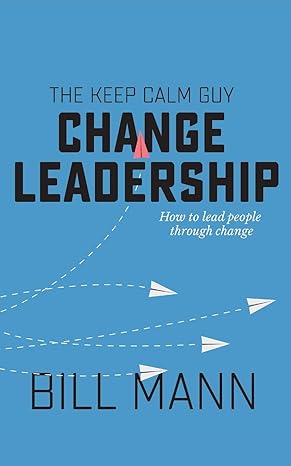In “Change Leadership,” Bill Mann offers a compelling framework for navigating the complexities of organizational change. This blog explores the key concepts and actionable insights from Mann’s work, highlighting the vital role of effective leadership in driving successful change initiatives. Discover how leaders can embrace change, foster a culture of adaptability, and engage their teams throughout the transition process. With practical strategies and real-world examples, this blog will provide you with the tools to become a more effective change leader, ensuring that your organization thrives in an ever-evolving landscape. Join us as we delve into the principles of change management and learn how to lead with confidence and clarity.
Here are 25 key lessons from “Change Leadership” by Bill Mann.
1. Embrace Change: Understanding that change is inevitable is crucial for effective change leadership. Leaders must accept and embrace change to guide their teams successfully.
2. Vision and Purpose: A clear vision is essential for motivating teams during transitions. Communicating the purpose of change helps align everyone’s efforts.
3. Involve Stakeholders: Engaging all stakeholders in the change process fosters buy-in and minimizes resistance. Collaborative approaches are key to successful organizational change.
4. Effective Communication: Transparent communication is vital. Leaders should communicate openly about the reasons for change and its impact on employees.
5. Build Trust: Establishing trust within teams enhances cooperation and morale. Trust is a cornerstone of effective change management.
6. Adaptability: Leaders must remain adaptable. Flexibility in leadership styles can facilitate smoother transitions during periods of change.
7. Develop Resilience: Encouraging resilience in teams helps them navigate challenges. Resilient teams are better equipped to handle the uncertainties of change.
8. Continuous Learning: Promote a culture of continuous learning. Encouraging employees to develop new skills prepares them for changes and boosts overall performance.
9. Lead by Example: Leaders should model the behaviors they wish to see. Demonstrating commitment to change influences others positively.
10. Create a Supportive Environment: Foster an environment that supports innovation and experimentation. A supportive culture encourages employees to embrace change.
11. Utilize Data and Feedback: Collect and analyze data to inform change strategies. Regular feedback helps leaders adjust their approach effectively.
12. Celebrate Small Wins: Recognizing and celebrating small successes during the change process boosts morale and reinforces commitment to the overall vision.
13. Empower Teams: Empowering employees to take ownership of their roles in the change process enhances engagement and accountability.
14. Identify Change Agents: Recruit and develop change agents within the organization. These individuals can help champion the change and influence others.
15. Strategic Planning: A well-defined change strategy is essential for successful implementation. Leaders should develop detailed plans outlining steps and timelines.
16. Address Resistance: Anticipating and addressing resistance to change is crucial. Understanding the root causes of resistance can help leaders devise effective solutions.
17. Align Resources: Ensure that resources are aligned with the change goals. Adequate support and resources are necessary for successful change initiatives.
18. Monitor Progress: Regularly track the progress of change initiatives. Monitoring allows leaders to make necessary adjustments along the way.
19. Stay Committed: Commitment to the change vision is vital. Leaders should remain steadfast even when faced with challenges and setbacks.
20. Engage in Self-Reflection: Regular self-reflection helps leaders assess their effectiveness and identify areas for growth in their change leadership skills.
21. Network and Collaborate: Building relationships with other leaders can provide valuable insights and strategies for managing change effectively.
22. Foster Innovation: Encourage innovative thinking and creative problem-solving among teams to find new ways to implement change.
23. Focus on Culture: Understand that organizational culture plays a significant role in the success of change initiatives. Leaders should assess and align culture with change goals.
24. Be Patient: Change takes time. Leaders should practice patience and provide support as teams adjust to new ways of working.
25. Legacy of Change: Leaders should aim to create a lasting impact through their change initiatives. Building a legacy of successful change leadership enhances organizational growth.
These lessons from “Change Leadership” by Bill Mann highlight essential strategies and principles for navigating the complexities of change in any organization. By integrating these insights, leaders can foster a culture of adaptability and resilience, ultimately driving their organizations toward sustainable success in an ever-evolving landscape.
“Start Your Website Journey Today – Exclusive Hostinger Discounts!”




